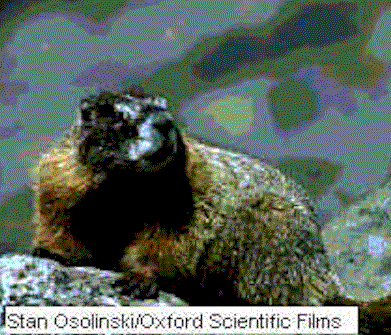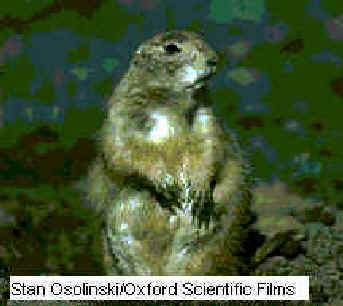
THE REASON WE'RE ALL HERE...
![]()
![]()
![]()
Use
the links
above to
navigate
the
Varmints
section of EGPWorld.
  |
![]()
The common European marmot is found in the high peaks of the Alps and Pyrenees Mountains. The bobac is the marmot of eastern Europe and Asia. The common marmot of eastern North America is the woodchuck, or groundhog. This animal is gray or brown, with black or brown above and paler below. It attains a length up to 0.6 m (2 ft) and has a bushy tail up to 0.25 m (0.82 ft) long. The whistler, or hoary marmot, is a larger, white and gray species found in northwestern North America. The yellow-bellied marmot, is found from southwestern Canada to New Mexico.
Scientific classification: Marmots belong to the family Sciuridae, of the order Rodentia. They make up the genus Marmota. The European marmot is classified as Marmota marmota, the bobac as Marmota bobak, and the woodchuck as Marmota monax. The whistler is classified as Marmota caligata, and the yellow-bellied marmot as Marmota flaviventris.
  |
![]()
Prairie Dog, any of five similar species of small, ground-dwelling rodents, once very common in the plains and plateaus from southern Saskatchewan, Canada, to northern Mexico. Prairie dogs are closely related to the marmot and ground squirrel. The animals, which are 28 to 33 cm (11 to 13 in) long, emit a barklike yip as a warning cry, hence their name. Highly social rodents, they live in "towns" sometimes made up of thousands of individuals; they dwell in holes dug straight down 1 to 5 m (3 to 16 ft) to nest hollows. The animals surface during the day and spend much time grooming each other and defending family territorial boundaries, for which they have elaborate rituals. Prairie dogs build the earth from their holes into conical rings that prevent flooding. They feed on herbs and grasses within range of their holes; their methods of selective browsing and scattering the raw, excavated earth from their tunnels attracts a crop of fast-growing weeds, which they later eat.
The chief predators of prairie dogs are hawks, eagles, snakes, and coyotes, for which the rodents stay alert at their tunnel entrances, sounding special warning cries when danger threatens. Because prairie dogs compete with cattle for rangeland grasses, ranchers have severely reduced their numbers. Protected prairie dog colonies are limited to national parks. A typical species is the common prairie dog, which has short legs and a blunt, squirrel-like head with short ears. Females produce two to ten pups in the spring.
Scientific classification: Prairie dogs make up the genus Cynomys in the family Sciuridae. The common prairie dog is classified as Cynomys ludovicianus.
